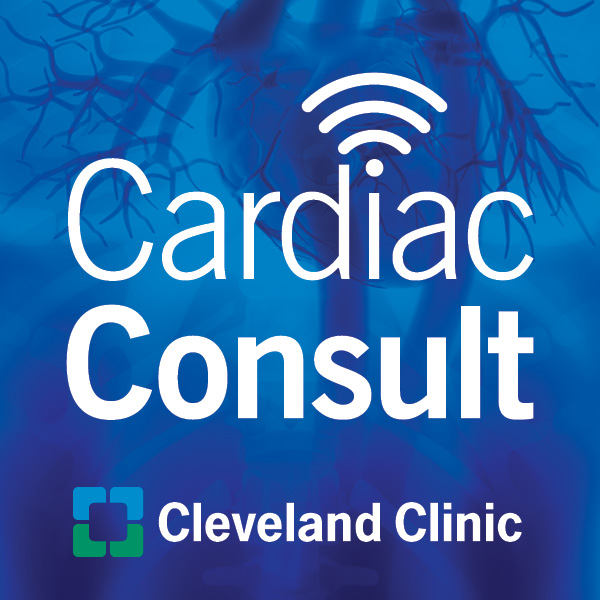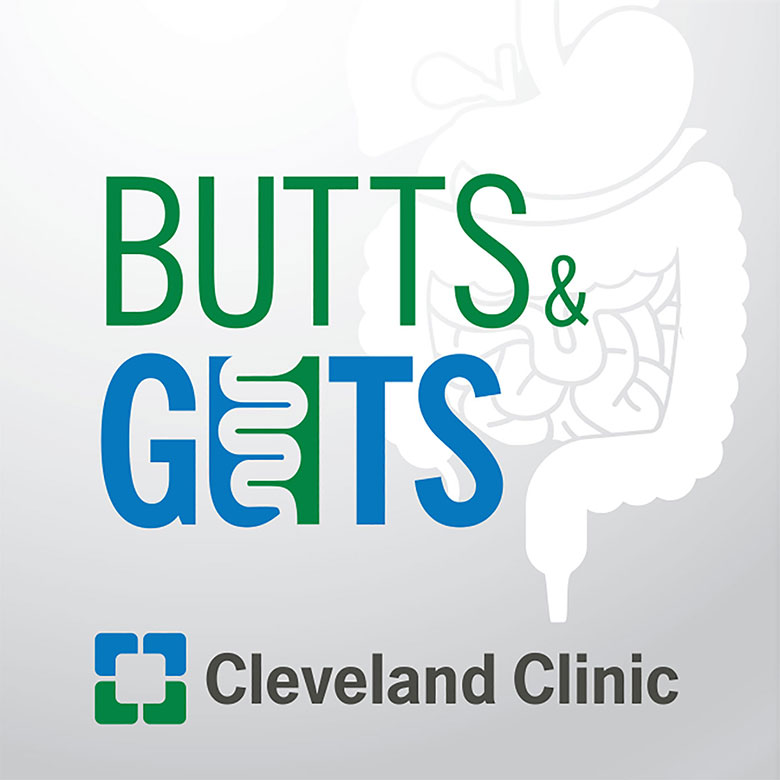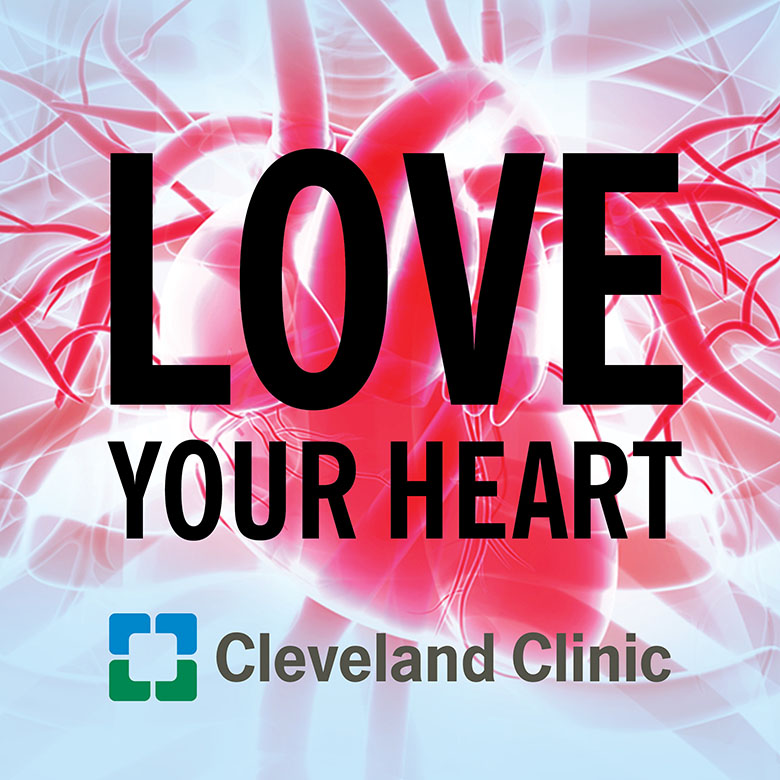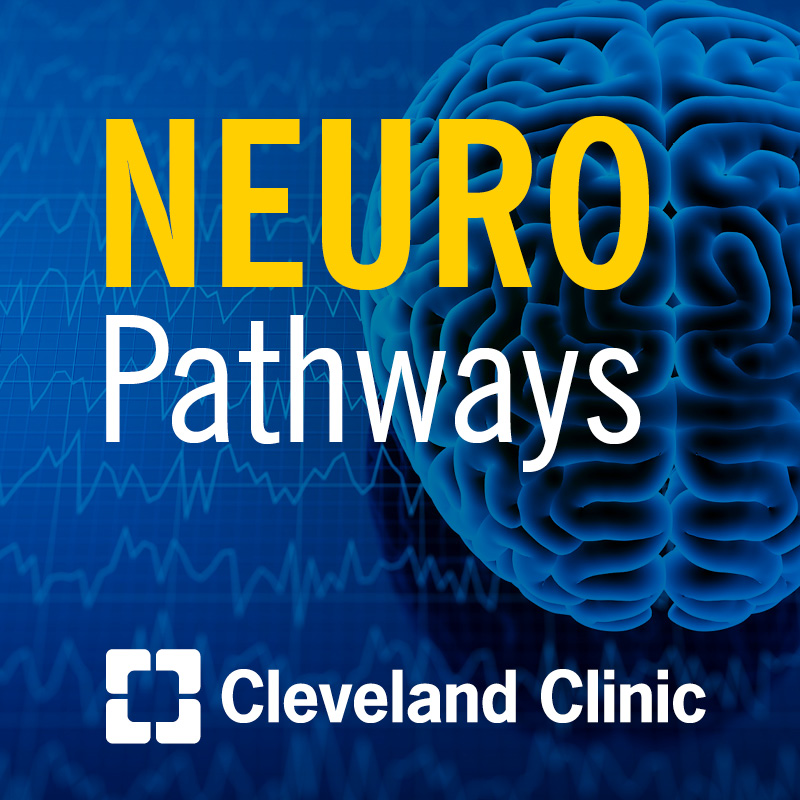Caring for Patients with Achalasia

Achalasia has many treatments available Thoracic surgeons Dr. Siva Raja and Dr. Monisha Sudarshan discuss how they determine the right treatment for the patient. At Cleveland Clinic, the team provides a multidisciplinary approach to care. Dr. Raja and Dr. Sudarshan present the pros and cons of the four treatments for achalasia: botox, pneumatic dilation, POEM (Peroral Endoscopic Myotomy) procedure, and Heller myotomy. What happens when someone had a procedure in the past and continues to have symptoms? Are there certain types of achalasia that are treated better with one procedure than another? Can people have achalasia along with hiatal hernia?
Learn more about Cleveland Clinic's Thoracic Surgery Department.
Subscribe: Apple Podcasts | Podcast Addict | Buzzsprout | Spotify
Caring for Patients with Achalasia
Podcast Transcript
Announcer:
Welcome to Cleveland Clinic Cardiac Consult brought to you by the Sydell and Arnold Miller Family Heart, Vascular and Thoracic Institute at Cleveland Clinic.
Siva Raja, MD, PhD:
Welcome to this podcast on achalasia. We've done a few of these in the past, but I think that we thought it was time to revamp some discussion about the treatments for achalasia and the decisions on who gets what. Talking about that today I'm Dr. Siva Raja, I'm one of the thoracic surgeons at the Cleveland Clinic, I'm also the director, the surgical director of the Esophageal Center at the Cleveland Clinic. With me is Dr. Monisha Sudarshan.
Monisha Sudarshan, MD:
Hi, I'm Dr. Monisha Sudarshan. I'm one of the thoracic surgeons at Cleveland Clinic. I'm also the Director of Esophageal Research. So Dr. Raja, tell us how, if you get a patient in your clinic with achalasia, diagnosis of achalasia, there's multiplicity of treatments available for it, how do you go about deciding which one is the right one for the patient you are seeing?
Siva Raja, MD, PhD:
That's a very good question and that's a question that comes up, I know with every patient that I see is because there is a lot of treatments for achalasia and we strongly believe in the right treatment for the right patient. And that right treatment is both based on science, as well as with the discussion with the patient about how they're feeling and what their overall all conditions are. And I think that one of the strengths of what we do here is that we offer the entire gamut of therapy. It's not that we have for only some of the treatments, in which case you are only going to get offered some of the treatments. And so in a lot of places when you go to get treatment for a very rare disease, like achalasia, people specialize in one or two treat treatments and that's probably the options you're going to get.
Siva Raja, MD, PhD:
And in here we do offer a lot. And so in addition to being able to offer you all the different treatments, if we do offer you all the treatments, we need to have some rationale for why we recommend one or the other because there's very rarely a patient that says that, "I know what I want, and this is what I want, and this is what I want you to do for me." Almost everybody is interested in having a discussion about the pros and cons of what these treatments are, but at the end of the day, they say once you've explained to them, they want to know what do I think? And in that situation, I need to have some reason as to why I would recommend one versus the other.
Siva Raja, MD, PhD:
So in our previous discussions, we've talked about the different types of achalasia, and also we've talked about patients, how their esophagus does not work normally. Their sphincter, which is the valve at the bottom of the esophagus does not want to open, and at the same time the esophagus, which is the entire organ in itself, doesn't want to squeeze the food down from top to bottom, it's something called peristalsis, which is gone. So as a result, a lot of patients have an esophagus that's not normal in size, it gets bigger and bigger, especially as time goes on. So they have a large esophagus that doesn't work, and this sphincter doesn't want to open. So we can't do too much about the esophagus that's wider, but we can open this sphincter and go from there.
Siva Raja, MD, PhD:
So the four treatments that we have are Botox, which is an injection that is done into the sphincter valve, the bottom of your food pipe, and that causes this sphincter that's closed all the time to relax. The second one is called a pneumatic dilation. It's something that is a balloon is placed in there and then we blow up the balloon to break the muscle on the outside, turns out that the inner layer of the esophagus tends to be very stretchy and doesn't break. And so when you break the muscle on the outside, the sphincter becomes looser and the food can go down better. There are the last two options are actually surgical options, one is called a POEM or Per Oral Endoscopic Myotomy where everything is done through the mouth, where we make an incision inside the esophagus, make a little tunnel down to the sphincter valve, and then cut it. We'll refer the video on that will one for anyone who's interested. And similarly, there's a Heller myotomy, which is an operation that's done laparoscopically and now robotically, which is a version of laparoscopy and where we cut the muscle and also give people an anti-reflux valve afterward. It's nothing artificial, it's using your own stomach, but we recreate a valve.
Siva Raja, MD, PhD:
So there are advantages and disadvantages to every one of these treatments. And so we use that to decide who gets what. So the easiest one to do is the Botox, but it doesn't last very long. So if someone who is healthy, we don't want to employ a temporary solution, we employ something that is more permanent. And the other three treatments we talked about are more long-lasting. The pneumatic dilation can be very effective but has less effectiveness over a longer period of time. So we use that for folks who either have had previous treatment or are frail or have other medical issues that they're not going to do well with anesthesia and surgery and things like that. So the surgical options is really where it comes down to when you come to see a surgeon, is that they want to know what surgery you're going to do.
Siva Raja, MD, PhD:
And I think that the other two procedures we talked about just now are done by our specialized gastroenterologists in our swallowing center. So the surgery comes in the form of POEM or comes the form of Heller myotomy with a partial fundoplication. The advantage of a POEM is that it is very well tolerated, there's less pain, shorter amount of recovery, most people are recovered within 48 hours. And it works. You never want to compare two things where one works and one doesn't work, so all options work and the POEM works very well. But the way the POEM works, is that it cuts the muscle and the sphincter. So the sphincter that's supposed to open and close is now closed in patients with achalasia and that's what achalasia is, but after the operation, it's open all the time. If it's open all the time, you can have heartburn and more than half the people who have that procedure do have heartburn, albeit a lot of them the medications to control the acid reflux do control their symptoms.
Siva Raja, MD, PhD:
And that's where the Heller myotomy comes in is where whenever possible, where the esophagus isn't very dilated, or they have what's called type two achalasia where the esophagus it actually has some function even though it's not a normal function, we do the Heller myotomy because we give people the partial flat. So instead of 50% or more of patients having heartburn, 15% or so have heartburn, and even then medications tend to do very well with them.
Siva Raja, MD, PhD:
So that's sort of how we figure out who gets what, and obviously when situations arise where someone could have one or the other, where there's an overlap, then we give the option to the patient as to which one they want. But generally speaking, there's a medical reason for our recommendation.
Monisha Sudarshan, MD:
Okay. So one question I have for you Dr. Raja is, we do see sometimes patients coming who have had a POEM or have had a Heller myotomy and still don't have a relief, and they're coming to seek the other treatment that they didn't have. Is it possible to do that in these patients or someone who has had a POEM who wants surgery, because they're still having the same symptoms?
Siva Raja, MD, PhD:
It is. And I think, to be honest, I actually prefer it that way, because I think that whenever a procedure fails because probably because of some technical limitation or whatnot, and you could probably overcome that with the other technique. So for example, when you have a POEM procedure either it is a procedure that's done inside the esophagus and you're not anywhere outside and it's not always clear, especially if you weren't the one doing the first one, exactly where the muscle was cut. And there's only so much real estate in the esophagus to cut the muscle. And if you can't find out exactly where they cut it because they came from the inside, you could see it from the outside and that's where a robotic Heller myotomy becomes useful. Similarly, if you've had a laparoscopic or robotic Heller myotomy and you have a flap in place, in order to redo the myotomy, you got to take the flap down.
Siva Raja, MD, PhD:
But if you did the POEM where you can actually go the opposite side, because you almost always know where the first one was, then even if you didn't do it where the one was, if you did it laparoscopically, then you could do an operation without having to do any major surgery. So I think that the two procedures can complement each other when one fails. So let me throw that question back at you. I talked a lot about what my thoughts are on who we would recommend one to the other. Are there groups of patients you think should have one or the other and definitely not the other?
Monisha Sudarshan, MD:
Well, we have done research on this from our own experience and there are certain types of achalasia and we can find these certain types through the investigations that we do when we see our patients. And yes, there are certain types that would do better with a POEM, and then there are certain types that would do better with a Heller myotomy. So I think that is one of the guiding principles. And then on top of that, as you mentioned before, if the other medical issues the patients have can sometimes guide our decisions. If a patient has had several surgeries in the abdomen before, it might be tough to get in there again, or especially do it laparoscopically, then that might tease us more towards the POEM pathway where we don't have to make an incision in the belly.
Siva Raja, MD, PhD:
Okay. So what are your thoughts? I know there are some on this subject that comes up in the technical arena, in the surgical field, is that there are people who believe that you get achalasia and you have hiatal hernia. How often do you think that happens at the same time? Some people believe it never happens at the same time.
Monisha Sudarshan, MD:
Well, we know that it does happen, it might not happen commonly, but it does happen because we've encountered those patients in our clinic. And that's also one of those situations where a surgical treatment might be better, because if you have a hiatal hernia, if you do a POEM, you are not addressing the hiatal hernia part of it and sometimes the symptoms can even worsen, so in those situations, I would lean more towards a surgical management. Another technical or anatomical change that would lead us towards a surgical management is when patients have a diverticulum and achalasia. A diverticulum is when it's kind of an outpouching or a balloon in the esophagus that can cause patients to have food accumulate there, depending on the size and have regurgitation and doing a POEM there, depending on the size of the diverticulum, may not be optimal and you actually have to surgically take it out, so those are certain circumstances which steer us towards surgery.
Siva Raja, MD, PhD:
Yeah. I agree. I think that when people have small outpouching I think that a POEM's reasonable if they want it done. But when they have large outpouching you don't really solve their problem by just cutting the sphincter because they got more than one problem. So I think I agree with you. There are certain patients that should have one. I personally don't recommend POEM procedure to people with any reasonable size hiatal hernias, because the heartburn afterward is pretty severe and I'm not sure that medical therapy is going to take care of that. And two, I think that you have to think about if they did have big, severe symptoms fixing the hernia after you've cut the muscle and cause them scarring in that area is not trivial. And so I think you got to put all those pieces to together before you do something as opposed to like try to catch up at the end.
Monisha Sudarshan, MD:
Patients are not likely in Cleveland or in Ohio and are everywhere across the country or even the world. And so we work with their local doctors to help obtain the tests we want and are able to schedule virtual visits or telephone visits to talk to them. So our follow up, we follow them closely in the first three months to make sure that they don't have any acid reflux, so we do a test for that, and we do a swallow to see how well they're swallowing, how fast the dye goes and we're able to establish a baseline at that point after the surgery. And if they're doing well, then we still continue to follow them every year with a swallow study or if it showed reflux to treat them for reflux and to ensure their symptoms are taken care of and their reflux is solved according to tests.
Monisha Sudarshan, MD:
And it's very important to follow them closely in the first three years because our own studies have shown that following them and ensuring that there's no symptoms or recurrence or coming back of the achalasia the first three years is associated with more longer-term relief. So we continue to do the test every year, speak to them, make sure their symptoms are under control and even after that to see them or talk to them every couple of years with a study to ensure ongoing relief from the surgery. And we're able to do this working with their local doctors, so they don't need to fly back to see us every time.
Siva Raja, MD, PhD:
Yeah. I think a joint approach to taking care of achalasia is going to be the most important thing long term, but we always emphasize, and we actually try to emphasize that in the clinic even before the operation, that operations are very, very successful, but they are not guaranteed to be one and done. It's not like fixing broken leg where once the leg heals you're good to go. These require follow-up, they require maintenance and the important and the reason to do it, there should be a reason why we follow people other than just to know that if they're having problems and there are many things that we can do that are very simple, like all the way from a simple dilation to treating a reflux that can significantly prolong the lifespan of the esophagus and it can also make people's quality of life much better.
Siva Raja, MD, PhD:
So I think that intervening early and identifying problems allows us to make sure that the original operation they have continues to work for people lifelong. So this has been an update to our discussions of achalasia in the past, hopefully you find it as interesting as we did. Thank you.
Monisha Sudarshan, MD:
Thank you for listening.
Announcer:
Thank you for listening. We hope you enjoyed the podcast. We welcome your comments and feedback. Please contact us at heart@ccf.org. Like what you heard, subscribe wherever you get your podcast or listen at clevelandclinic.org/cardiacconsultpodcast.

Cardiac Consult
A Cleveland Clinic podcast exploring heart, vascular and thoracic topics of interest to healthcare providers: medical and surgical treatments, diagnostic testing, medical conditions, and research, technology and practice issues.



